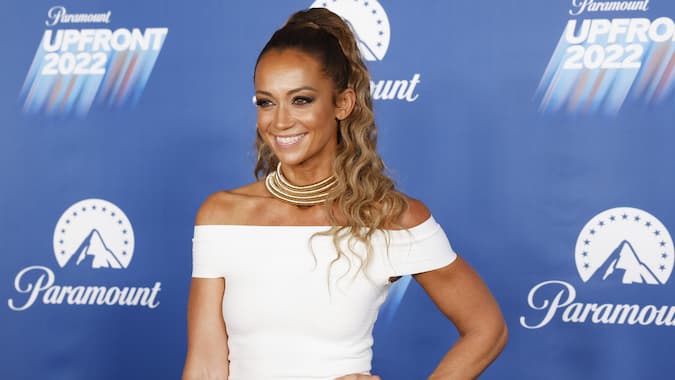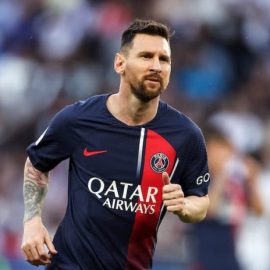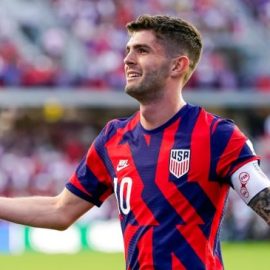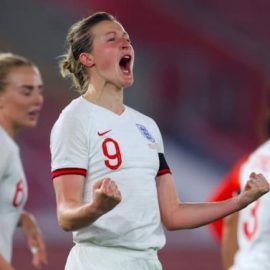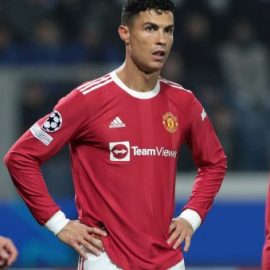Oxford United’s relegation from the football league in 2006 was a boon to pub quiz writers. A disastrous season meant they were now the only English team to win a major domestic honour to be playing non-league football, while simultaneously being replaced in the league by Accrington Stanley, a team they’d replaced in 1962 when Stanley went bust. Quizzers may be scratching their heads. Oxford fans will just be asking one question: how?
One would not have anticipated the club sinking so low since their Milk Cup win of 1986 but the 2007/08 season has seen new depths plumbed. Despite starting this season as a tip for promotion back to the league, Oxford are currently 12th having just put together their first back-to-back wins since August.
There’s no one reason why the U’s have dropped so far but, as with most other clubs going through difficult times, Oxford’s is an all too familiar tale of heavy debts and controversial owners taking their toll both on and off the field.
The highs and lows of the league early years
Since gaining league status, stability has not been a word easily associated with the Us. In 1964 they became the first Forth Division (now League 2) club to reach the FA Cup quarter finals, an achievement not yet bettered. Subsequent years saw them rise as high as the old Second Division before relegation back to Division 3 in 1976.
Towards the end of the 70s Oxford starting experiencing financial problem that would become all too familiar over the coming years and were saved from going bust in 1982 when controversial media tycoon Robert Maxwell brought the club. The Maxwell era ushered in the most successful period in the U’s history, but also was the catalyst for their slow spiral into heavy debt and a slow slide down the league pyramid.
After riding into town as Oxford’s knight in shining armour, Maxwell’s relations with the fans quickly soured. In a move that has only since been outdone for sheer brazenness and disregard for history by those who relocated Wimbledon to Milton Keynes, Maxwell announced Oxford were to merge with Reading to create the Thames Valley Royals. Adding a somewhat stick-shaped carrot, the tycoon also threatened to fold the club if the merger failed.
Maxwell failed to follow through with the threat and the merger never materialised due to boardroom opposition at Reading and, somewhat ironically, what followed was an unprecedented level of success. Manager Jim Smith delivered Third and Second Division titles in successive years and in 1985 Oxford found themselves playing top-flight football.
Their spell as a First Division club was largely spent battling relegation but also provided their greatest moment — a 3-0 Milk Cup (now known as the Carling Cup) victory over Queen’s Park Rangers in 1986. Had it not been for the Heysel Stadium disaster leading to a ban on English teams in Europe, Oxford would have played in the following season’s UEFA Cup.
In the boardroom, Maxwell’s ambition to own two football clubs still remained and in 1987 he brought Derby County and, neatly sidestepping conflict of interest rules, stepped down as chairman of Oxford allowing in one Kevin Maxwell, who just happened to be his son. It was the beginning of the slide.
First Oxford were relegated to the second tier before then manager Mark Lawrenson resigned following the sale of star striker Dean Saunders to none other than Derby County, still owned by Maxwell junior’s dad.
If Us’ supporters were angry at the Maxwell link, that link would cause despair three years later when, in 1991, Robert Maxwell died after falling overboard from his yacht. With the tycoon’s plundering of the Mirror newspaper’s pension fund exposed to the world his personal estate, which included Oxford United, became insolvent. Suddenly the slightly iffy Saunders transfer seemed a lot less important compared to keeping the club afloat.
The post-Maxwell years
Oxford United, heavily in debt, spent a fair bit of time looking for a buyer before Oxford fan and co-owner of the March Racing Team, Robin Herd, took control. One of Herd’s plans was to replace the slightly run-down Manor Ground and in 1995 announced plans for a new out-of-town all-seater stadium that conformed to all post-Hillsborough legislation.
This swiftly ran into the twin problems of the local council, who were deadlocked with Herd over the sale of land around the site, and a lack of money. With the project going nowhere, the debts rising the as much as £13million and Herd lacking the money to either reduce the debt or finish the ground, the Oxford supporters grew restless and called for change at the top. In 1999 Firoz Kassam rode into town, purchasing the club for the princely sum of £1.
Kassam, by his own admission, was not a football man. What he was good at, though, was business, having made his fortune through hotels in the 80s. He was quick to enter the crippled club into a Company Voluntary Arrangement (CVA) in order to reduce the debts, with all unsecured creditors over £1,000 paid 10p in the pound. In this case, the £9million owed to such creditors ended up costing Kassam £900,000.
Meanwhile Kassam also moved to resolve Oxford’s other problem: the unfinished stadium. This was still bogged down in appeals on the surrounding land but a resolution was somehow found, which saw Kassam pay £1.3million for the land and planning permission for a large leisure complex, including a hotel, restaurant, cinema, and bowling alley. The £15million modestly-named Kassam Stadium plan was ready to proceed.
But Oxford’s chairman hadn’t just been working on securing land around the new ground. While the legal battles over the out-of-town site were ongoing, Kassam had sold the Manor Ground stadium to Firoka, a holding company registered in Jersey and owned by Kassam, for £6million. This money was used to pay off secured creditors while the Manor Ground and the surrounding land was sold, complete with planning permission, to the Nuffield Hospital Group for £12million. The profits on the sale went to Kassam.
Kassam’s business acumen had paid off nicely for himself and there was an extra sweetener on top. When Oxford moved into their new stadium in 2001, Kassam kept ownership of the ground and the surrounding commercial development. The terms of the lease means Oxford United are still paying rent and overheads to Kassam, despite the millionaire no longer owning the club.
Kassam has frequently defended his role in Oxford’s history, pointing out his money saved the club and that he took a huge risk when building the new stadium. That risk did not extend to putting cash into the playing side and all cash put in to cover operating losses was done so as loans. Oxford are still paying these back.
Predictably, the club slid further down the league during this period and spent the majority of Kassam’s tenure in the Third Division (now League 2 and formerly the old Fourth Division). In March 2006, with the club heading towards relegation to the Conference, Kassam sold the club, but retaining ownership of the ground and commercial complex.
Towards the present day
Oxford’s new owner, Nick Merry, was a US-based businessman who’d been on the U’s books as a teenager before injury ended his career. His first act as a chairman was a popular one — Jim Smith, architect of Oxford’s promotions in the 80s, was reinstalled as manager. But even the bald eagle couldn’t stop the slide and, forty-four years after replacing Accrington Stanley, Oxford United replaced football’s most famous milk drinkers in the Conferece.
But Smith hadn’t been idle during Oxford’s last months in the league and when the 2006/07 season kicked off the U’s were favourites to win the Conference and make an immediate return to the football league.
More importantly the fans at last had something to cheer about. They might have dropped down a level but Oxford United were starting to win games on a regular basis. Suddenly non-league football didn’t seem so unappealing and, the fans reasoned, if Oxford had to take a step backwards to make a leap forward back into the football league then so be it.
For the first twenty-five games Oxford were unstoppable and unbeaten, and pulled away from the chasing pack. But a first loss, to Gravesend, in November saw an eight match winless streak that saw Dagenham and Redbridge catch up, and concerned faces around the Kassam. Concern, because Oxford’s business plan was based on the assumption the club would get promoted.
When clubs are relegated to the Conference they get a parachute payment to ease the financial pain of relegation. This money can be taken all at once or staggered. Oxford took it all at once and gambled on promotion. In many respects, this wasn’t a bad plan. Clubs that had failed to regain their football league status at the first time of asking had spent several more years trying, and in many cases still trying, to get promotion. Often this involved lean years and financial difficulties. This was not an attractive option.
But there was little in the way of backup plan and while the U’s lost momentum, Dagenham overtook them and long before the season was over, the Essex club had built an unassailable lead.
Oxford, however, still had the play-offs and despite a stuttering final run, the club still finished in second place to set-up a play-off semi with Exeter City. With a Yemi Odubade goal giving Oxford an important one-nil victory at St. James’ Park in the first leg, the promotion plan was firmly back on track. What they hadn’t planned for was an astonishing night of football on the return leg at the Kassam that saw Exeter recover from 2-nil down on aggregate to level the match and win the penalty shootout.
As Exeter fans celebrated, the glum faces around the Kassam reflected more than just the defeat. Jobs were on the line and the club was back to an uncertain financial footing. Jim Smith had some serious cloth cutting to do and despite a few new signings several of the club’s higher earners remained on board.
Despite a reasonably strong start to the current campaign, which again saw bookies peg them as one of the favourites for the title, Oxford started to concede late equalisers at the start of September, throwing away leads at home to both Halifax and their play-off nemesis Exeter, who had missed out on promotion to Morecambe in the play-off final.
A home loss to Aldershot and away defeat at part-time Histon followed and the wheels were starting to come off Oxford’s season already. Whipping boys Droylsden provided a 3-nil defeat later that month, while Torquay snatched a point after going three down at the Kassam. A 5-0 away defeat to Rushden and Diamonds was the final straw and Smith moved upstairs to a director of football position, paving the way for youth team coach Darren Patterson to take charge.
Patterson’s appointment hardly inspired the Oxford faithful, who had been hoping for a bigger name or, at the very least, a fresh start. Although he opened with a FA Cup victory over Northwich, by January there were already calls for his resignation following a five match winless streak. Meanwhile high earners like Rob Duffy and Alex Jeannin were loaned out while four others were transfer listed. Patches in the squad were filled with loanees and teenagers.
But Oxford are at least safe for the time being. Two home wins have arrested the slide leaving them firmly ensconced in mid-table, 18 points ahead of the drop zone but 15 away from the play-offs. 2008, like 2007, will not be Oxford’s year.
Meanwhile, the U’s faithful look towards next season with a mixture of curiosity and concern, with no assumption Oxford will be challenging for a play-off spot, let alone the title. Those who remember the Milk Cup victory will look back and wonder how a team that a little over twenty years ago was playing top flight football, is now relieved to have secured successive wins against Histon and Droylsden. Even the most pessimistic fan in the 80s couldn’t have foreseen just how far Oxford would fall.
Gary Andrews also has his own blog….
Add Sportslens to your Google News Feed!
